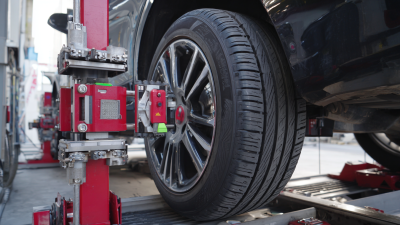Essential Tips for Dealing with Flat Tires: Your Ultimate Guide to Roadside Assistance
Flat tires can be a frustrating and unexpected ordeal for any driver, but knowing how to handle them effectively can save you time and stress. This comprehensive guide provides essential tips for dealing with flat tires, emphasizing the importance of roadside assistance flat tire services. Whether you find yourself stranded on the side of the road or simply want to be prepared for emergencies, understanding the best practices for addressing tire issues is crucial. We’ll explore practical steps for assessing damage, the tools you should keep in your vehicle, and how to communicate effectively with roadside assistance services. By equipping yourself with the right knowledge and resources, you can navigate flat tire situations with confidence and minimize disruption to your journey.

Understanding the Basics of Flat Tires and Common Causes
Flat tires can occur unexpectedly, leaving drivers stranded and frustrated. Understanding the basics of flat tires is crucial for any vehicle owner. A flat tire typically indicates that the tire has lost its air pressure due to leaks, punctures, or structural failures. Common causes of flat tires include running over sharp objects, such as nails or glass, or hitting potholes that can damage the tire’s sidewall. Additionally, extreme weather conditions or improper tire maintenance can exacerbate these issues, leading to blowouts or leaks.
Another important factor to consider is the age and condition of your tires. Tires deteriorate over time, and older tires are more susceptible to flats, even if they appear to be in good shape. Regular inspections and tire rotations can help identify potential problems before they lead to a flat tire incident. It’s also vital to keep tires properly inflated, as under-inflated tires are at greater risk of blowouts. By maintaining awareness of these common causes and the basic mechanics of flat tires, drivers can mitigate the risk and prepare for unexpected roadside challenges.
Essential Tips for Dealing with Flat Tires: Your Ultimate Guide to Roadside Assistance
| Common Causes of Flat Tires | Signs of a Flat Tire | Steps for Roadside Assistance | Safety Tips |
|---|---|---|---|
| Punctures from sharp objects | Vibration or pulling to one side | Call for assistance using a reliable service | Stay in your vehicle if in traffic |
| Air leaks from valve stems | Loss of tire pressure warning light | Provide your location clearly | Use hazard lights to alert other drivers |
| Damaged rims | Unusual noises while driving | Inform the technician about the problem | Keep a safe distance from moving traffic |
| Overheating tires | Worn-out tread patterns | Stay with your vehicle until help arrives | Have a first aid kit accessible |
Essential Tools to Keep in Your Vehicle for Tire Emergencies
When it comes to handling flat tires, being prepared with the right tools can make all the difference. One of the essential items to keep in your vehicle is a quality spare tire. Ensure it is properly inflated and regularly check its condition, as a flat spare can be just as problematic. Additionally, a functional jack and lug wrench are crucial for lifting your vehicle and removing the tire. Opt for a lightweight, portable jack that is easy to handle, even in less than ideal conditions.
Beyond the basics, having a tire inflator or compressor can be a lifesaver, especially if the flat is due to a slow leak. A tire repair kit, complete with plugs and tools, allows you to perform quick fixes on the spot. Don’t forget to include safety items such as a reflective triangle and a flashlight. These can help keep you safe while working on your vehicle and ensure that others can see you on the roadside. By equipping your car with these essential tools, you’ll be ready to tackle tire emergencies efficiently and effectively.
Essential Tips for Dealing with Flat Tires
This chart displays the essential tools to keep in your vehicle for tire emergencies, highlighting their importance in roadside assistance situations.
Step-by-Step Guide to Changing a Flat Tire Safely
Changing a flat tire can be a daunting task for many drivers, but following a step-by-step guide can make it a manageable experience. According to a recent survey by the American Automobile Association (AAA), around 30% of drivers admit they wouldn’t know how to change a flat tire. This indicates a significant gap in knowledge that can leave motorists stranded. To start, make sure you're parked on a flat surface, turn on your hazard lights, and engage the parking brake to ensure safety during the process.

Begin by loosening the lug nuts while the tire is still on the ground, which prevents the wheel from spinning. After that, use a jack to lift the vehicle until the flat tire is off the ground, then remove the lug nuts completely. Replace the flat tire with the spare, ensuring it’s properly aligned with the wheel hub. Following the install, hand-tighten the lug nuts and lower the vehicle back to the ground before fully tightening the nuts in a crisscross pattern. This method helps to secure the spare tire correctly, minimizing the risk of further issues and ensuring a safe journey ahead.
When to Call for Professional Roadside Assistance
 Flat tires can happen at the most inconvenient times, leaving drivers in uncertain situations. Knowing when to call for professional roadside assistance is crucial. According to a report by the American Automobile Association (AAA), more than 20 million drivers nationwide experienced a flat tire in 2020, highlighting the commonality of this problem. If you're alone in an unfamiliar area, dealing with challenging weather conditions, or lack the proper tools to change a tire safely, it’s advisable to call for help rather than risk injury or further damage to your vehicle.
Flat tires can happen at the most inconvenient times, leaving drivers in uncertain situations. Knowing when to call for professional roadside assistance is crucial. According to a report by the American Automobile Association (AAA), more than 20 million drivers nationwide experienced a flat tire in 2020, highlighting the commonality of this problem. If you're alone in an unfamiliar area, dealing with challenging weather conditions, or lack the proper tools to change a tire safely, it’s advisable to call for help rather than risk injury or further damage to your vehicle.
In addition, it’s important to consider your skill level and the time it might take to change a tire. A study from the National Highway Traffic Safety Administration (NHTSA) found that poorly executed tire changes can lead to further accidents. For those who feel uncomfortable or unsafe handling a flat tire on the side of the road, professional assistance should be the first choice. Roadside assistance services not only provide expertise but also ensure that you and your vehicle are safe from potential roadside hazards.
Preventive Measures to Avoid Flat Tires in the Future
Preventing flat tires is essential for ensuring safe and uninterrupted travel. One of the most effective measures is regular tire maintenance, which includes checking tire pressure at least once a month. Proper inflation is crucial, as under-inflated tires are more prone to damage and can lead to blowouts. Additionally, inspect tires for wear and tear, looking out for uneven tread wear or any visible punctures. Rotating your tires every 5,000 to 8,000 miles can help extend their lifespan and maintain even wear.
Another vital preventive step is to be mindful of the driving environment. Avoiding potholes, debris, and rough road surfaces can significantly reduce the risk of tire damage. Investing in quality tires that are suitable for your driving conditions can also make a significant difference. If you're venturing into areas with rough terrain, consider all-terrain tires designed for increased durability. Finally, keeping an emergency kit that includes a spare tire, jack, and tire repair supplies will ensure that you're prepared should an unexpected flat occur despite your preventive measures.
Related Posts
-

Exploring the Impact of Tire Technology on Auto Performance and Safety in 2023
-

Understanding Tire Alignment Cost: What Affects Pricing and Why It Matters for Your Safety
-

Essential Tips for Choosing the Best Tire Repair Shop Near You
-

Discover the Best Local Tire Shops for Your Vehicle Needs Near You
-

The Real Factors Influencing Tire Alignment Cost: What Every Car Owner Should Know
-

The Ultimate Guide to DIY Car Tyre Repair Techniques for Every Driver